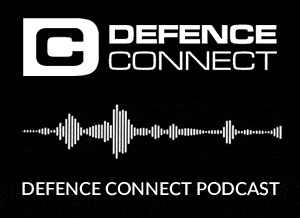image-1 = images/Korea-1950-1953/1.jpg
title-1 = Korea, 1950
description-1 = Graphic map of the Korean Peninsula, 1950. (Source: National Army Museum UK)
status-1 = 1
image-2 = images/Korea-1950-1953/3.jpg
title-2 = The 38th parallel
description-2 = American map detailing potential flashpoints along the border, (Source: USAF website)
status-2 = 1
image-3 = images/Korea-1950-1953/3.jpg
title-3 = The invasion
description-3 = American soldiers march north towards the 38th parallel, 1950. (Source: National Army Museum UK)
status-3 = 1
image-4 = images/Korea-1950-1953/4.jpg
title-4 = HMAS Shoalhaven
description-4 = A lateral shot of Shoalhaven. (Source: Royal Australian Navy website)
status-4 = 1
image-5 = images/Korea-1950-1953/5.jpg
title-5 = Sailors of Shoalhaven
description-5 = Sailors aboard Shoalhaven as the ship leaves Garden Island, Sydney, bound for the Korean War. (Source: Australian Photographic Agency, 42585)
status-5 = 1
image-6 = images/Korea-1950-1953/6.jpg
title-6 = No. 77 Squadron
description-6 = A jet fighter of No. 77 Squadron, pictured at western Seoul’s Kimpo Airfield, Korea. (Source: State Library of Victoria/Australian Department of Air, H2002.199/2893).
status-6 = 1
image-7 = images/Korea-1950-1953/7.jpg
title-7 = A well-deserved break
description-7 = The ‘Flight Line’ men of No. 77 enjoying a tea break at Kimpo. Dated 1952. (Source: AWM, JK0571/Australian Department of AIr).
status-7 = 1
image-8 = images/Korea-1950-1953/8.jpg
title-8 = Re-arming
description-8 = An unidentified sergeant (left) and a ground crew member of 77 Squadron RAAF, work on re-arming a P51 Mustang after its return from a mission in Korea. June 1950. (Source: AWM, HOBJ0992)
status-8 = 1
image-9 = images/Korea-1950-1953/9.jpg
title-9 = 3RAR (Pt. I)
description-9 = Private Hughie Hemmings, 3" Mortar Platoon Support Company, 3rd Battalion Royal Australian Regiment. (Source: AWM, P00370.016)
status-9 = 1
image-10 = images/Korea-1950-1953/10.jpg
title-10 = 3RAR (Pt. II)
description-10 = Sergeant Bill McGuinnes and Lance Corporal Joe Collis. 3” Mortar Platoon Support. (Source: AWM,P00370.019)
status-10 = 1
image-11 = images/Korea-1950-1953/11.jpg
title-11 = 3RAR: a group portrait
description-11 = Formal group portrait at Division Headquarters, 3rd Battalion, The Royal Australian Regiment. (Source: AWM HOBJ5452)
status-11 = 1
image-12 = images/Korea-1950-1953/12.jpg
title-12 = Administrative duties
description-12 = Unidentified Australian armed forces at work carrying out administrative duties in Korea. (Source: SLV).
status-12 = 1
image-13 = images/Korea-1950-1953/13.jpg
title-13 = A moment of respite
description-13 = Australian entertainer Pamela Jopson, on stage before a crowd of Australian soldiers. (Source: State Library of Victoria, H2002.199/4234)
status-13 = 1
image-14 = images/Korea-1950-1953/14.jpg
title-14 = George Holland
description-14 = George Holland, president of the Returned and Services League of Australia (RSL), pays his respects at the British Commonwealth War Graves Cemetery, Yokohama, during a tour of Japan and Korea. (Source: AWM, HOBJ3629)
status-14 = 1
image-15 = images/Korea-1950-1953/15.jpg
title-15 = The final parade
description-15 = The last parade of the 3rd Battalion, The Royal Australian Regiment (3RAR), in Korea before sailing for Australia was at the United Nations War Cemetery in Pusan, South Korea. (Source: AWM, HOBJ5496)
status-15 = 1
image-16 = images/Korea-1950-1953/16.jpg
title-16 = 1RAR returns
description-16 = Sydney welcomes troops of 1st Battalion, Royal Australian Regiment and other Korean War veterans on return to Australia in early April 1953. (Source: National Archives Australia)
status-16 = 1
image-17 =
title-17 =
description-17 =
status-17 =
image-18 =
title-18 =
description-18 =
status-18 =
image-19 =
title-19 =
description-19 =
status-19 =
image-20 =
title-20 =
description-20 =
status-20 =
Photo Essay: The Korean War (1950-1953)

Click to launch gallery
Scroll to read and see more
Five short years after the close of WWII, Australia would become embroiled in the US-led invasion of the Korean Peninsula. On 28 June 1950, then-PM Robert Menzies committed the RAN’s Pacific assets to the ‘Forgotten War’; followed soon by No. 77 Squadron (RAAF) and rotating RAR contingents.
Five short years after the close of WWII, Australia would become embroiled in the US-led invasion of the Korean Peninsula. On 28 June 1950, then-PM Robert Menzies committed the RAN’s Pacific assets to the ‘Forgotten War’; followed soon by No. 77 Squadron (RAAF) and rotating RAR contingents.
You’re out of free articles for this month
To continue reading the rest of this article, please log in.
Create free account to get unlimited news articles and more!
After the Chinese-backed North crossed the 38th parallel, the UN Security Council swiftly pushed through UNSC Resolution 82, calling on all members to support the pushback operation as of 25 June 1950. Australia, New Zealand, the US, the UK, and Canada would all join the fight in the days to follow; with the frigate HMAS Shoalhaven stationed in Japan as part of the British Commonwealth Occupation Force (and the destroyer HMAS Bataan on its way to replace the latter), Menzies wasted no time in committing both of these vessels to Korea.
Days later, No. 77 Squadron began sorties over enemy territory, flying American P-51D Mustangs. Less prepared for a surprise outbreak of war, the Australian Army entered the fray on 28 September 1950, landing at Busan (Korea's second city, located at the southern tip of the peninsula). They would assist the 27th British Commonwealth Brigade (and the subsequent 1st Commonwealth Division) through to the signing of the Korean Armistice on 27 July 1953.
This photo essay traces the deployment of Australian forces and assets to Korea, with a particular focus on RAR contingents and the human component.

 Login
Login






















